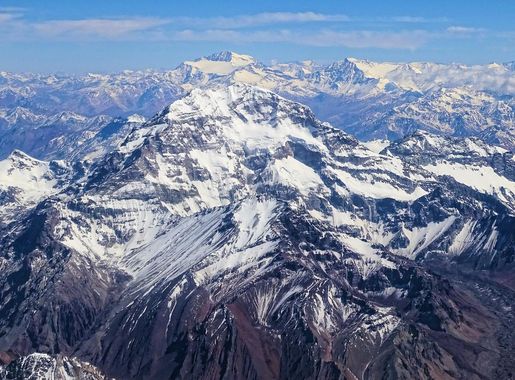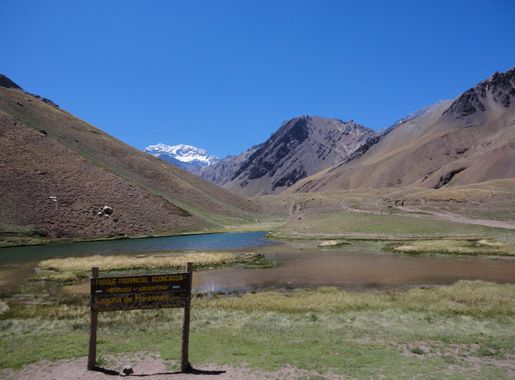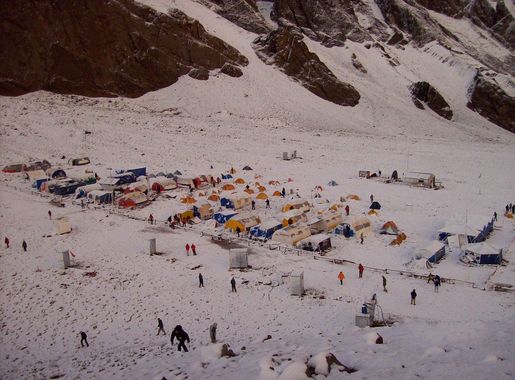
Aconcagua Provincial Park: The Majestic Andes Jewel
Discover the awe-inspiring Aconcagua Provincial Park, a haven for adventurers and nature lovers, home to the highest peak in the Western Hemisphere.
Aconcagua Provincial Park in Argentina is home to the highest peak in the Western Hemisphere, Mount Aconcagua. Situated in the heart of the Andes, the park offers breathtaking views and a profound sense of peace. It attracts mountaineers from all over the world who come to conquer the 'Stone Sentinel'. Even if you are not a climber, the park's stunning landscapes and rich biodiversity make it a must-visit destination. The park is not just about mountains. It is a sanctuary for unique flora and fauna. You can spot guanacos, the Andean fox, and a variety of birds, making it a paradise for nature lovers. The park's trails are perfect for hiking, offering various difficulty levels to suit all types of adventurers. The Horcones Valley is a popular spot, with its picturesque lagoon and incredible views of Aconcagua's south face. The best time to visit Aconcagua Provincial Park is during the summer months of December to March, when the weather is more favorable for outdoor activities. However, it is essential to be well-prepared for the altitude and weather conditions. The park is a place where you can connect with nature, challenge yourself, and experience the awe-inspiring beauty of the Andes.
Local tips in Aconcagua Provincial Park
- Visit between December and March for the best weather conditions.
- Prepare for high altitudes; acclimatization is essential.
- Don't miss the Horcones Valley for its scenic beauty.
- Carry plenty of water and sun protection.
- Check for park entry permits and regulations before your visit.
Aconcagua Provincial Park: The Majestic Andes Jewel
Aconcagua Provincial Park in Argentina is home to the highest peak in the Western Hemisphere, Mount Aconcagua. Situated in the heart of the Andes, the park offers breathtaking views and a profound sense of peace. It attracts mountaineers from all over the world who come to conquer the 'Stone Sentinel'. Even if you are not a climber, the park's stunning landscapes and rich biodiversity make it a must-visit destination. The park is not just about mountains. It is a sanctuary for unique flora and fauna. You can spot guanacos, the Andean fox, and a variety of birds, making it a paradise for nature lovers. The park's trails are perfect for hiking, offering various difficulty levels to suit all types of adventurers. The Horcones Valley is a popular spot, with its picturesque lagoon and incredible views of Aconcagua's south face. The best time to visit Aconcagua Provincial Park is during the summer months of December to March, when the weather is more favorable for outdoor activities. However, it is essential to be well-prepared for the altitude and weather conditions. The park is a place where you can connect with nature, challenge yourself, and experience the awe-inspiring beauty of the Andes.
When is the best time to go to Aconcagua Provincial Park?
Iconic landmarks you can’t miss
Portones del Parque General San Martín
Explore the natural beauty and cultural heritage of Mendoza at Portones del Parque General San Martín, a must-visit urban park for all travelers.
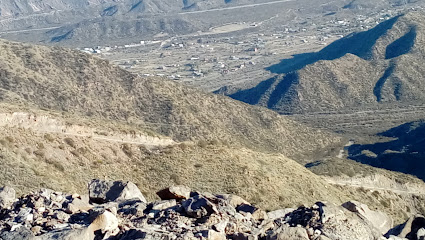
Parque Provincial Aconcagua
Experience breathtaking landscapes and outdoor adventures in Parque Provincial Aconcagua, the gateway to the tallest peak in the Americas.

Monument to the Army of the Andes
Explore the Monument to the Army of the Andes in Mendoza, a historical landmark nestled in the serene Parque San Martín, celebrating Argentina's fight for independence.
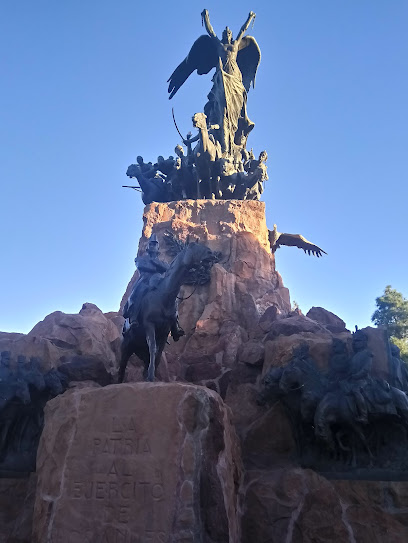
Villavicencio Natural Reserve
Explore breathtaking landscapes and rich biodiversity at Villavicencio Natural Reserve, a must-visit nature preserve in Mendoza, Argentina.
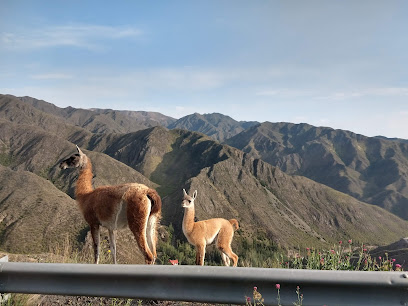
Mirador Del Cerro Aconcagua
Explore the stunning Mirador Del Cerro Aconcagua in Mendoza, where breathtaking views of the Andes and Aconcagua peak await every traveler.
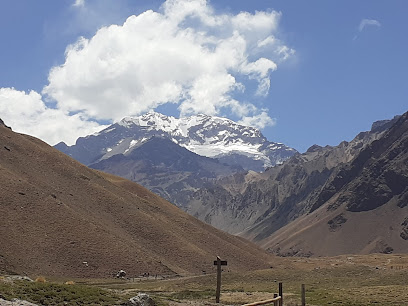
Aconcagua
Experience the breathtaking beauty and exhilarating adventure of Aconcagua, the highest peak in South America, nestled in Mendoza Province.
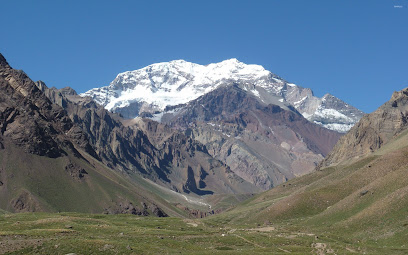
Laguna de Horcones
Explore the serene beauty of Laguna de Horcones, a national park in Mendoza known for its turquoise waters and breathtaking mountain views.
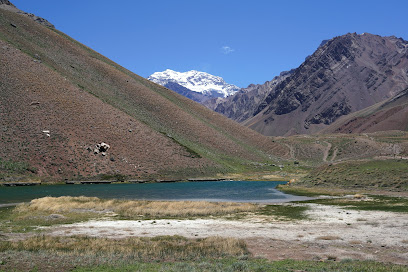
Plaza de Mulas
Experience the stunning beauty of Plaza de Mulas, the gateway to Aconcagua, where adventure meets breathtaking landscapes in Mendoza Province.
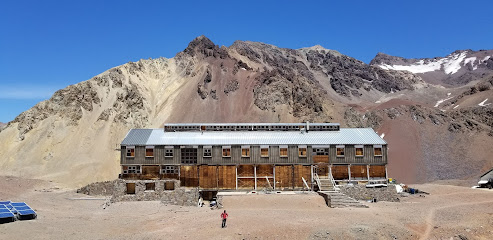
Provincial Aconcagua Park
Explore the stunning landscapes and rich biodiversity of Provincial Aconcagua Park in Mendoza, Argentina—home to South America's highest peak.
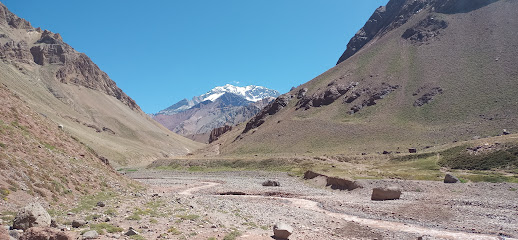
Unmissable attractions to see
Penitentes
Experience breathtaking landscapes, thrilling outdoor adventures, and the charm of Penitentes, a must-visit destination in Argentina's Andes Mountains.
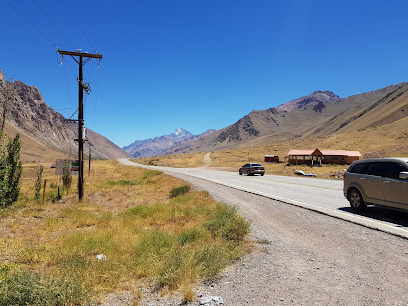
Los Puquios
Explore Los Puquios in Mendoza Province, a winter wonderland perfect for snowboarding and enjoying nature's breathtaking beauty.
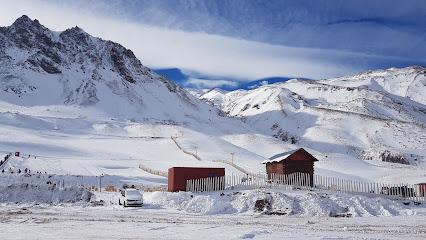
Los Puquios
Explore Los Puquios in Mendoza, Argentina, a breathtaking tourist attraction perfect for snowboarding and enjoying nature's splendor.
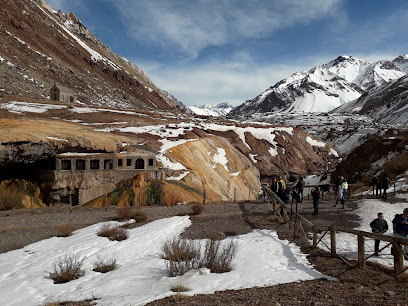
Aconcagua Viewpoint
Experience the stunning beauty of the Aconcagua Viewpoint, offering breathtaking views of the Andes and Aconcagua, the highest peak in the Americas.
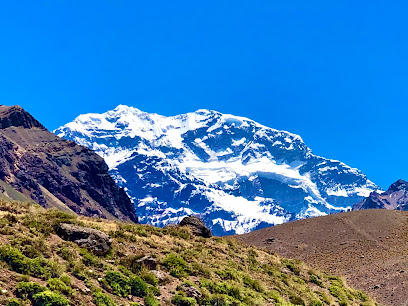
TUNNEL CHRIST THE REDEEMER of THE ANDES
Experience the breathtaking beauty and spiritual significance of Tunnel Christ the Redeemer of the Andes, a must-see destination in Mendoza Province.
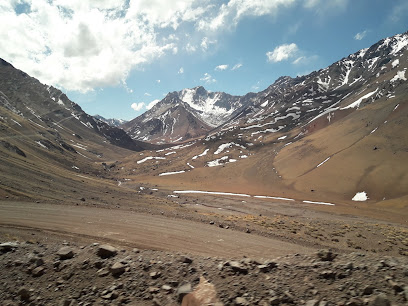
Casuchas del Rey
Explore Casuchas del Rey, a historical landmark in Mendoza's stunning landscapes, offering hiking adventures and cultural insights into Argentina's rich heritage.
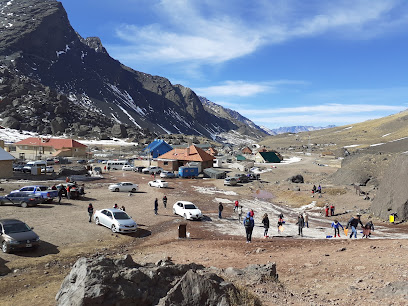
Fin sendero de la laguna de Horcones
Explore the serene beauty of Laguna de Horcones in Mendoza Province, a breathtaking natural attraction perfect for outdoor enthusiasts and nature lovers.
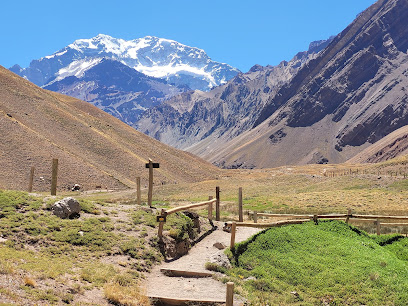
Laguna de Horcones
Explore the stunning landscapes and diverse wildlife of Laguna de Horcones, a national park in Mendoza Province, Argentina, perfect for nature lovers and adventure seekers.
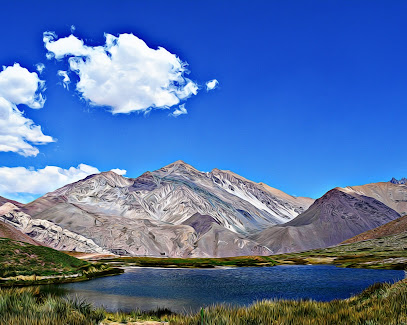
Park of Study and Reflection Punta de Vacas
Experience tranquility and spiritual rejuvenation in the serene landscapes of the Park of Study and Reflection Punta de Vacas, a unique meditation center in Mendoza.
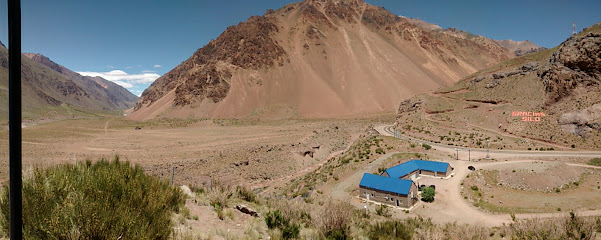
Quebrada de Matienzo
Discover the stunning beauty and geological marvels of Quebrada de Matienzo in Mendoza Province, a must-visit natural attraction for all travelers.
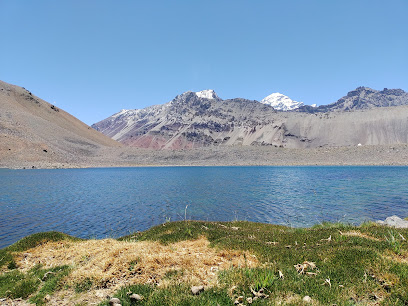
Aconcagua
Discover the breathtaking beauty and adventure of Aconcagua, the highest peak in South America, located in picturesque Mendoza Province.
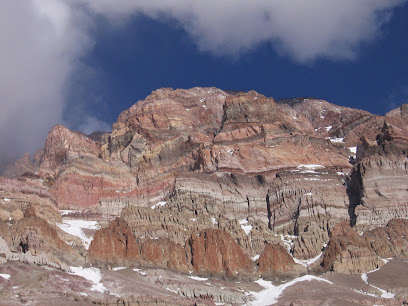
Villa las cuevas mendoza
Discover the enchanting Villa las Cuevas in Mendoza, a unique tourist attraction blending stunning landscapes, rich history, and cultural experiences.
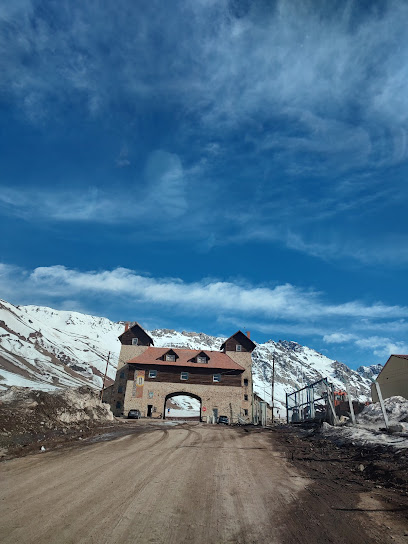
Cordillera Mendocina
Explore the breathtaking Cordillera Mendocina, a paradise for nature lovers and adventure seekers in Mendoza Province, Argentina.
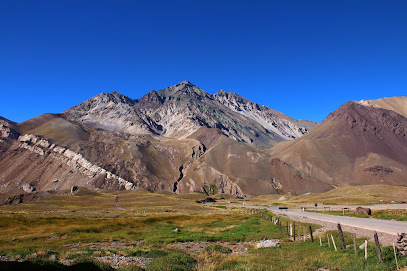
Laguna Potrero Escondido
Explore the serene beauty of Laguna Potrero Escondido in Mendoza, a perfect getaway for nature lovers and adventure seekers alike.
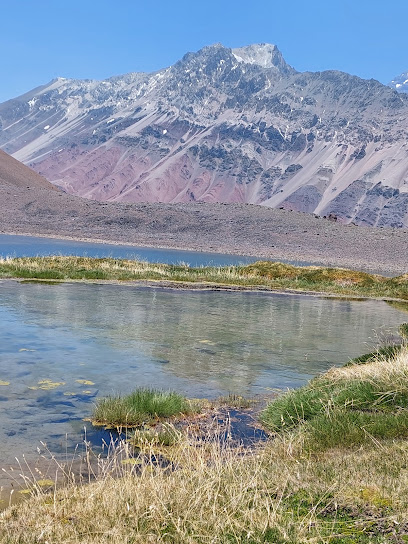
Vista rutera del Aconcagua
Discover the breathtaking views of Aconcagua at Vista Rutera del Aconcagua, a must-see for every nature lover in Mendoza.

Essential places to dine
Parque Provincial Aconcagua
Explore Parque Provincial Aconcagua: An Iconic National Park Offering Stunning Views and Exceptional Hiking Adventures.

El Asadito · Mendoza
Discover authentic Argentine cuisine at El Asadito in Mendoza - a vibrant restaurant known for its exceptional asado and warm hospitality.
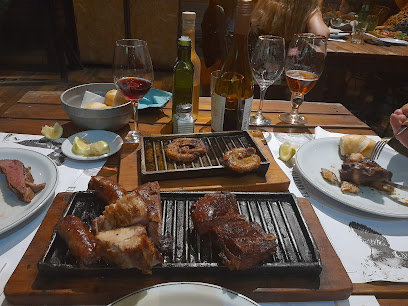
Anna Bistró
Experience authentic French cuisine at Anna Bistró in Mendoza - where exquisite flavors meet vibrant Argentine culture.
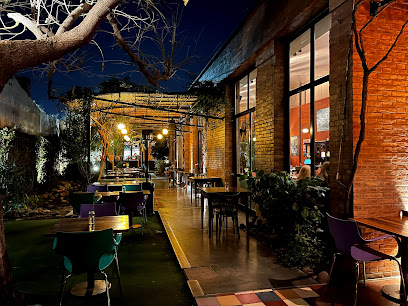
Estancia La Florencia
Experience authentic Argentinian cuisine at Estancia La Florencia in Mendoza - where every meal tells a story of flavor and tradition.
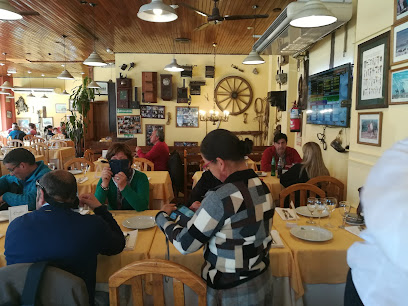
Pizzaiolo
Discover Pizzaiolo in Mendoza: where authentic Italian pizza meets local flavors in a vibrant atmosphere.
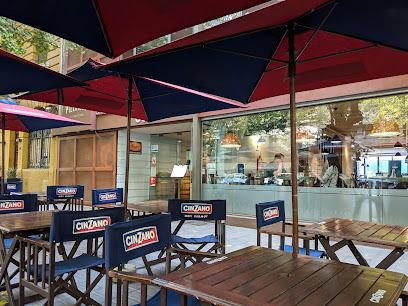
Magnolia Restó
Discover the exquisite flavors of Argentina at Magnolia Restó in Mendoza—where fine dining meets local wine excellence.
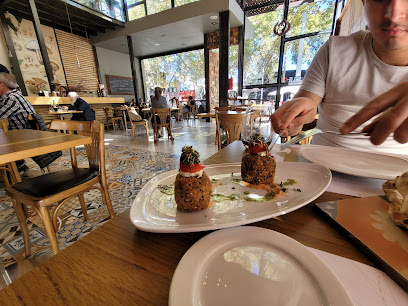
Kotay'k
Savor authentic Armenian cuisine at Kotay'k, where tradition meets flavor in the heart of Mendoza.
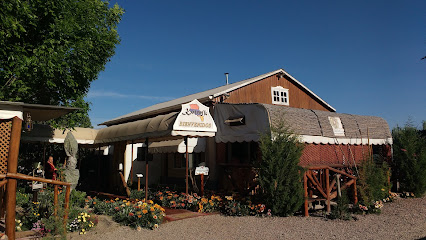
Francesco Ristorante
Discover authentic Italian flavors at Francesco Ristorante in Mendoza—where exquisite cuisine meets warm hospitality.
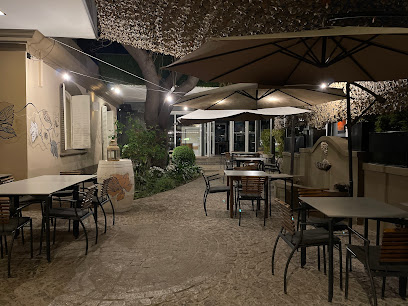
Azafran Restaurant
Experience the rich flavors of Argentina at Azafran Restaurant in Mendoza - where local ingredients meet innovative cuisine.
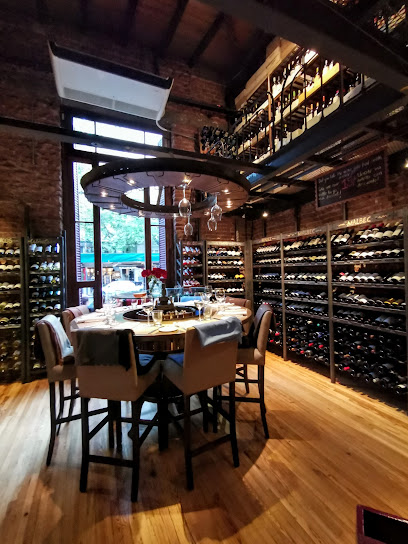
Mirador Del Cerro Aconcagua
Experience breathtaking views from Mirador Del Cerro Aconcagua – a premier observation deck showcasing nature's grandeur in Mendoza Province.
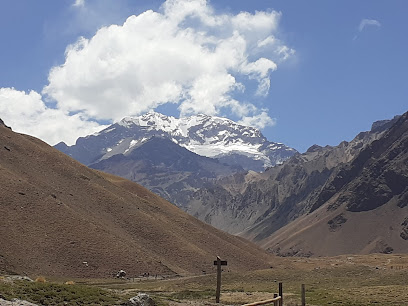
Casa Vigil Palmares
Discover exquisite flavors at Casa Vigil Palmares, Mendoza's premier restaurant and wine club offering an unforgettable dining experience.
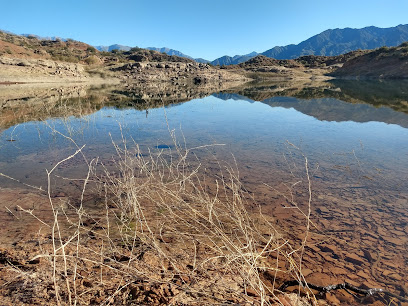
Cachè Bistro
Discover the flavors of Argentina at Cachè Bistro, where grilled perfection meets exquisite dining in the heart of Mendoza.
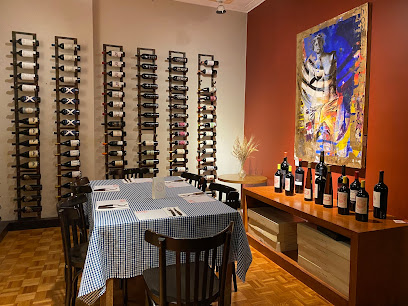
Auténtico
Discover authentic Argentine cuisine at Auténtico in Godoy Cruz, Mendoza – where every dish tells a story and every meal is an experience.
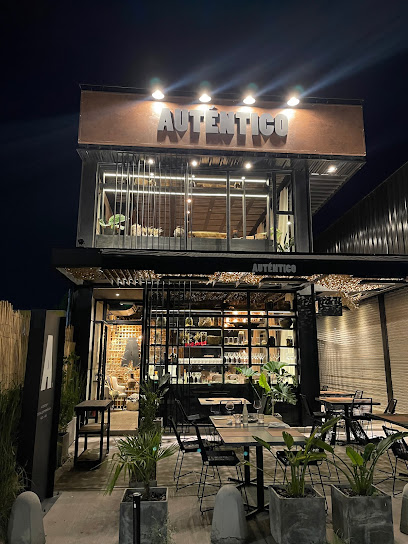
Carolino Cocina de Estación
Discover authentic Argentine cuisine at Carolino Cocina de Estación in Mendoza – where every dish is crafted with passion and local ingredients.
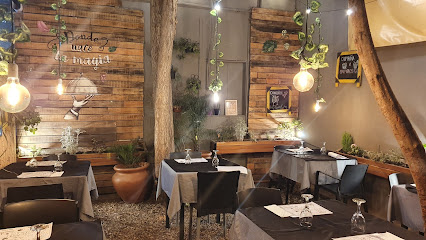
Espacio Trapiche
Experience unparalleled winemaking at Espacio Trapiche, where tradition meets innovation in Mendoza's stunning landscapes.
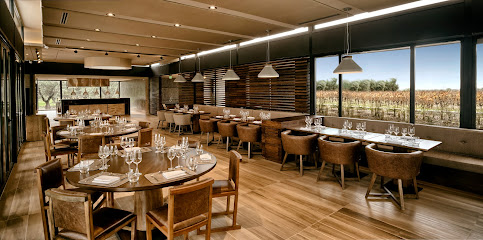
Markets, malls and hidden boutiques
Mendoza Shopping
Discover the best shopping, dining, and entertainment at Mendoza Shopping, your ultimate retail destination in Argentina.
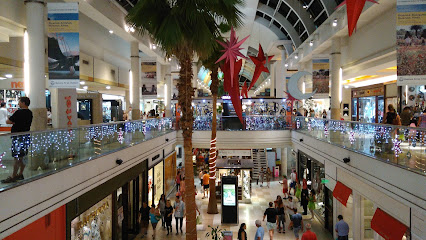
Portones del Parque General San Martín
Explore the captivating beauty and cultural richness of Portones del Parque General San Martín, Mendoza's scenic gateway to nature and history.
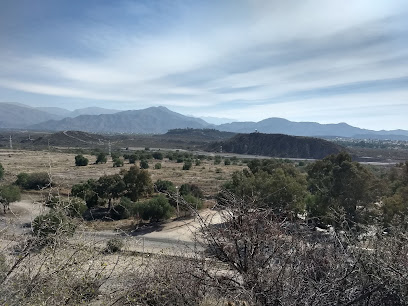
Parque Provincial Aconcagua
Explore Parque Provincial Aconcagua – A breathtaking national park in Mendoza, Argentina, featuring the highest peak in the Americas and stunning hiking trails.

Mirador Del Cerro Aconcagua
Experience the awe-inspiring vistas of the Andes at Mirador Del Cerro Aconcagua, where nature's beauty meets adventure in Mendoza Province.
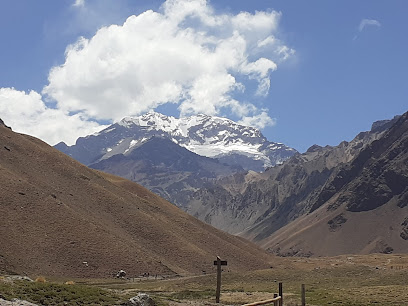
Aconcagua
Discover the breathtaking beauty of Aconcagua, the highest peak in the Americas, perfect for adventurers and nature lovers in Mendoza Province.

Lomas Shopping Plaza
Experience the best of shopping, dining, and entertainment at Lomas Shopping Plaza, Mendoza's premier shopping destination.
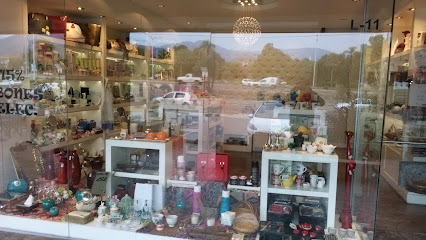
Los Puquios
Discover the thrill of snowboarding at Los Puquios, an exceptional tourist attraction in Mendoza, surrounded by the breathtaking Andes mountains.
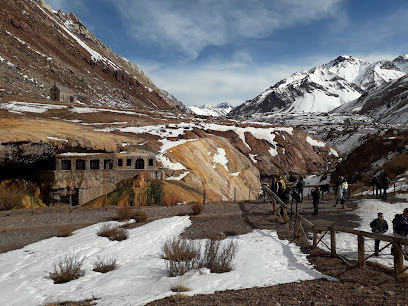
Divisadero Largo Mendoza
Discover the breathtaking beauty of Divisadero Largo Mendoza, a premier hiking destination in Argentina's stunning natural landscapes.
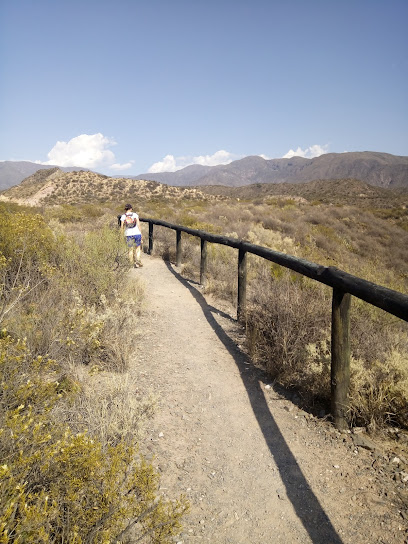
GALERÍAS PIAZZA
Discover an exceptional shopping experience at Galerías Piazza in Mendoza, featuring a variety of local and international brands and delightful dining options.
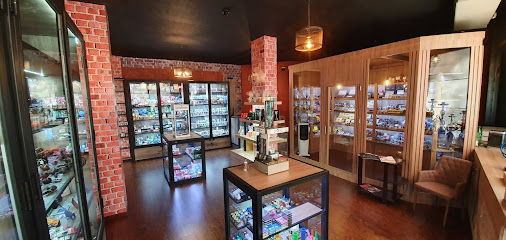
Plaza de Mulas
Explore the breathtaking Plaza de Mulas, your gateway to Aconcagua and a perfect retreat for adventurers in Mendoza Province.
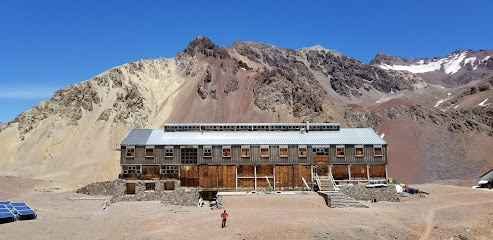
Aconcagua Provincial Park
Discover the breathtaking landscapes and adventures awaiting you at Aconcagua Provincial Park, the crown jewel of Mendoza Province.
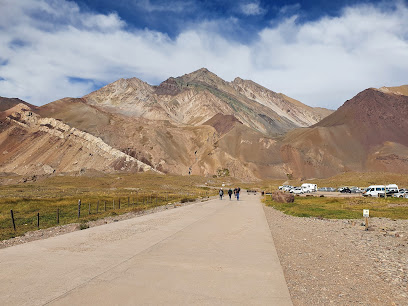
ESPACIO ARISTIDES
Explore the vibrant fashion scene at Espacio Arístides, Mendoza's premier destination for stylish dresses that embody local culture.
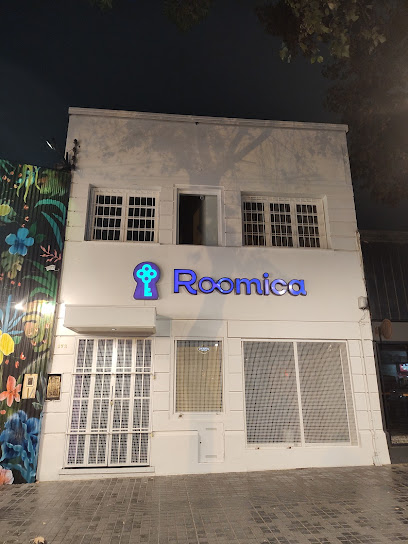
Provincial Aconcagua Park
Discover the breathtaking beauty of Provincial Aconcagua Park in Mendoza, where adventure meets stunning natural landscapes amidst the majestic Andes.
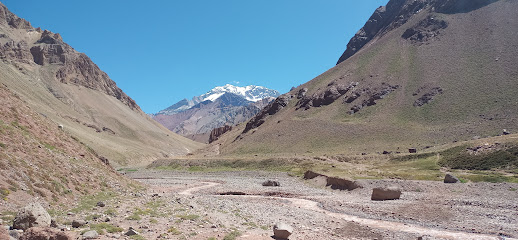
Essential bars & hidden hideouts
Barijho
Discover the vibrant ambiance and craft cocktails at Barijho, Mendoza's ultimate destination for nightlife and social gatherings.
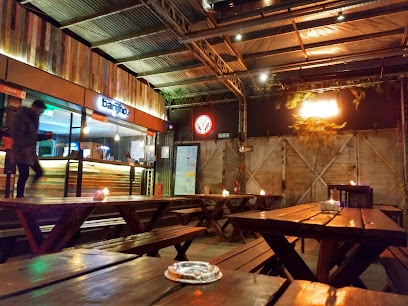
The Hidden Bar
Discover the vibrant flavors of Mendoza at The Hidden Bar, where exceptional grilled cuisine meets a lively and inviting atmosphere.
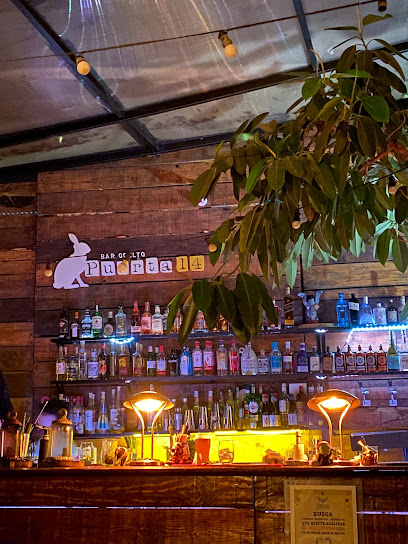
Chirolas Bar
Dive into Mendoza's nightlife at Chirolas Bar, where cocktails and camaraderie create unforgettable memories.
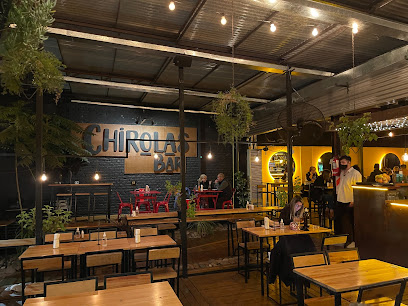
Mirador Del Cerro Aconcagua
Experience breathtaking views of Aconcagua and the Andes at Mirador Del Cerro Aconcagua, a premier observation deck in Mendoza Province, Argentina.
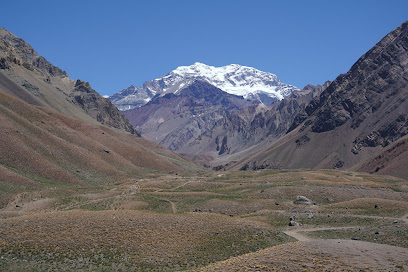
El Origen de I
Discover the flavors of Mendoza at El Origen de I, where exquisite local cuisine meets stunning mountain views in a charming setting.
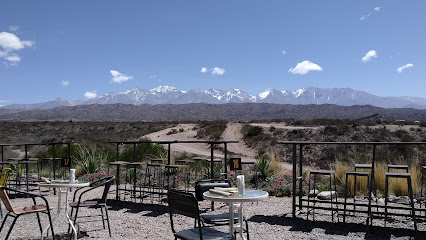
Don Pepe store
Experience the best of Potrerillos at Don Pepe Store, a charming gastropub offering local flavors and artisanal products in a stunning setting.

Jerome micro brewery
Experience the best of Mendoza's craft beer scene at Jerome Micro Brewery, where gourmet cuisine meets homemade brews in a vibrant atmosphere.
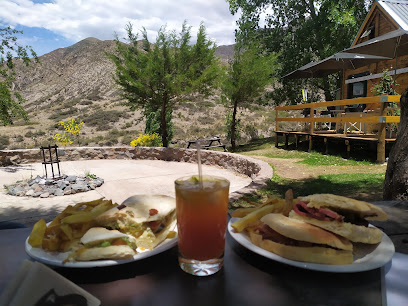
El Balcon de Pol Restobar y Cervecería Artesanal
Explore the flavors of Potrerillos at El Balcon de Pol, where local cuisine meets artisanal brews in a stunning mountain setting.
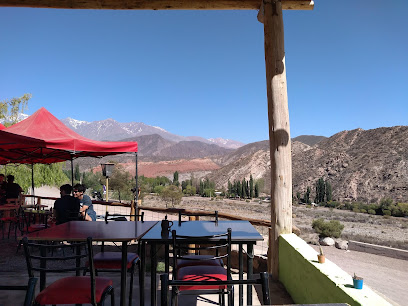
CHACHA RESTO BAR
Discover the essence of Mendoza at Chacha Resto Bar, a grill paradise offering delicious food and stunning views in the heart of Cacheuta.
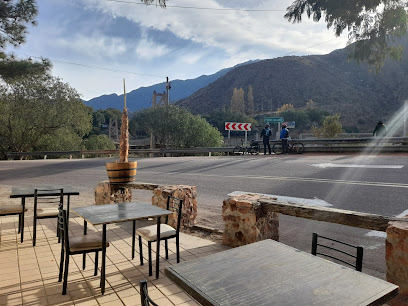
La Sandia - Parador
Discover La Sandia - Parador, a gastropub in Potrerillos, Mendoza offering craft beers and exquisite local cuisine with stunning views.
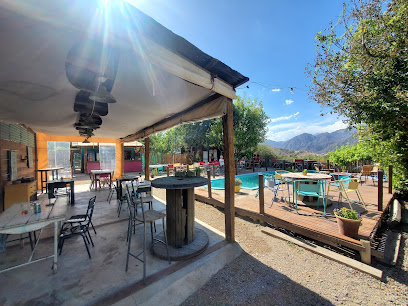
Río Aventura Mendoza (Bikini)
Discover the refreshing ambiance of Río Aventura Mendoza, your perfect bar destination in Potrerillos, offering scenic views and delightful beverages.
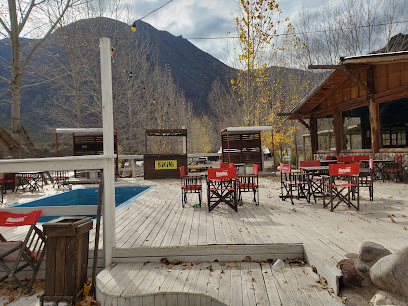
Restaurante Castillo de Brujas
Discover the flavors of Mendoza at Restaurante Castillo de Brujas, where local cuisine meets craft brewing in a warm and inviting atmosphere.
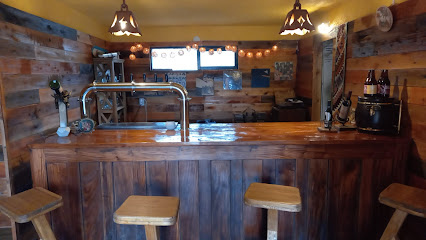
NATAN
Discover NATAN in Mendoza: a vibrant bar and restaurant serving exquisite local cuisine and drinks in a lively atmosphere.
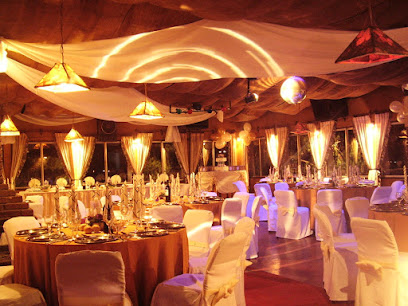
Las Palapas
Experience the enchanting charm of Las Palapas, a vibrant bar in Potrerillos, Mendoza, perfect for unwinding with friends and enjoying local flavors.
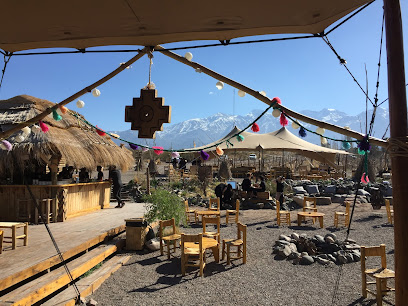
Los Manzanares Parador de Montaña
Experience the breathtaking beauty and local culture at Los Manzanares Parador de Montaña, the perfect bar retreat in Potrerillos, Mendoza.
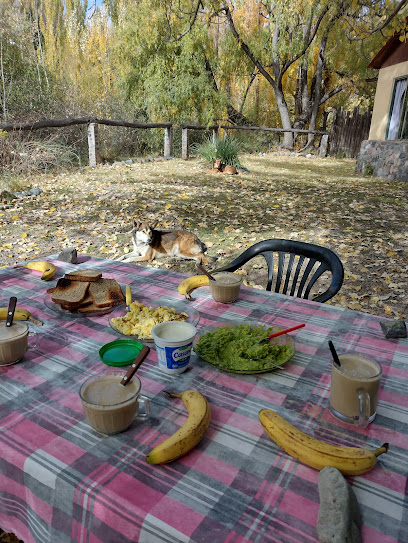
Local Phrases about Aconcagua Provincial Park
-
- HelloHola
[oh-la] - GoodbyeAdiós
[ah-dee-ohs] - YesSí
[see] - NoNo
[no] - Please/You're welcomePor favor/De nada
[por fah-bor/deh nah-dah] - Thank youGracias
[grah-see-ahs] - Excuse me/SorryDisculpe/Perdón
[dee-skool-peh/pehr-dohn] - How are you?¿Cómo estás?
[koh-moh ehs-tahs] - Fine. And you?Bien. ¿Y tú?
[byen. ee too] - Do you speak English?¿Hablas inglés?
[ah-blahs een-glays] - I don't understandNo entiendo
[noh ehn-tee-ehn-doh]
- HelloHola
-
- I'd like to see the menu, pleaseMe gustaría ver el menú, por favor
[meh goos-tah-ree-ah behr ehl meh-noo, por fah-bor] - I don't eat meatNo como carne
[noh koh-moh kahr-neh] - Cheers!¡Salud!
[sah-loohd] - I would like to pay, pleaseMe gustaría pagar, por favor
[meh goos-tah-ree-ah pah-gar, por fah-bor]
- I'd like to see the menu, pleaseMe gustaría ver el menú, por favor
-
- Help!¡Ayuda!
[ah-yoo-dah] - Go away!¡Vete!
[veh-teh] - Call the Police!¡Llama a la Policía!
[yah-mah ah lah poh-lee-see-ah] - Call a doctor!¡Llama a un doctor!
[yah-mah ah oon dohk-tohr] - I'm lostEstoy perdido/a
[ehs-toy pehr-dee-doh/ah] - I'm illEstoy enfermo/a
[ehs-toy ehn-fehr-moh/ah]
- Help!¡Ayuda!
-
- I'd like to buy...Me gustaría comprar...
[meh goos-tah-ree-ah kohm-prar] - I'm just lookingSolo estoy mirando
[soh-loh ehs-toy mee-rahn-doh] - How much is it?¿Cuánto cuesta?
[kwan-toh kwehs-tah] - That's too expensiveEso es demasiado caro
[eh-soh es deh-mah-see-ah-doh kah-roh] - Can you lower the price?¿Puede bajar el precio?
[pweh-deh bah-har ehl pree-syoh]
- I'd like to buy...Me gustaría comprar...
-
- What time is it?¿Qué hora es?
[keh or-ah es] - It's one o'clockEs la una en punto
[ehs lah oo-nah ehn poon-toh] - Half past (10)Y media (10)
[ee meh-dee-ah (deez)] - MorningMañana
[mah-nyah-nah] - AfternoonTarde
[tahr-deh] - EveningNoche
[noh-cheh] - YesterdayAyer
[ah-yehr] - TodayHoy
[oy] - TomorrowMañana
[mah-nyah-nah] - 1Uno
[oo-noh] - 2Dos
[dohs] - 3Tres
[trehs] - 4Cuatro
[kwah-troh] - 5Cinco
[seen-koh] - 6Seis
[seys] - 7Siete
[syeh-teh] - 8Ocho
[oh-choh] - 9Nueve
[nweh-veh] - 10Diez
[dyehs]
- What time is it?¿Qué hora es?
-
- Where's a/the...?¿Dónde está el/la...?
[dohn-deh ehs-tah ehl/lah] - What's the address?¿Cuál es la dirección?
[kwal ehs lah dee-rek-syon] - Can you show me (on the map)?¿Puede mostrarme (en el mapa)?
[pweh-deh mohs-trar-meh (ehn ehl mah-pah)] - When's the next (bus)?¿Cuándo es el próximo (autobús)?
[kwan-doh ehs ehl proh-ksee-moh (ow-toh-boos)] - A ticket (to ....)Un boleto (a ....)
[oon boh-leh-toh (ah)]
- Where's a/the...?¿Dónde está el/la...?
History of Aconcagua Provincial Park
-
Aconcagua Provincial Park is steeped in the legacy of the Inca civilization. The Incas considered Aconcagua a sacred mountain, and several archeological sites within the park testify to their presence. One of the most significant discoveries is the mummified remains of an Inca child, found in 1985 at an altitude of 5,300 meters. This finding suggests that the Incas performed ceremonial rituals at high altitudes, possibly as offerings to their gods.
-
The first recorded ascent of Aconcagua was achieved by the Swiss climber Matthias Zurbriggen on January 14, 1897. He was part of an expedition led by Edward FitzGerald, an English alpinist. The successful climb marked a significant milestone in mountaineering history and brought international attention to the region. Zurbriggen's route is still one of the most popular paths for climbers today.
-
Before the arrival of Europeans, the area around Aconcagua was a nexus of pre-Columbian trade routes. Indigenous tribes, such as the Huarpes, used these paths to trade goods like pottery, textiles, and agricultural products. These routes connected the Andes with the regions of central Chile and the Argentine plains, facilitating cultural and economic exchanges.
-
Aconcagua Provincial Park was officially established in 1983 to protect the unique ecosystem and cultural heritage of the region. The park covers an area of 71,000 hectares and is managed by the provincial government of Mendoza. The establishment of the park has been crucial in preserving its natural beauty and archeological sites, while also promoting sustainable tourism.
-
During World War II, a notable ascent was made by a Polish expedition in 1934. The team, led by Konstanty Narkiewicz-Jodko, not only reached the summit but also explored and documented new routes on the mountain's eastern face. Their achievements are commemorated by a memorial plaque at Plaza de Mulas, one of the base camps in the park.
-
In recent years, Aconcagua has become a popular destination for mountaineers from around the world. The influx of visitors has led to increased environmental awareness and conservation efforts. Organizations and local authorities collaborate to maintain trails, manage waste, and educate climbers on sustainable practices. These efforts are crucial in preserving the natural environment and ensuring that Aconcagua remains a pristine destination for future generations.
Aconcagua Provincial Park Essentials
-
Aconcagua Provincial Park is located in the Mendoza Province of Argentina. The nearest major city is Mendoza, which has El Plumerillo International Airport (MDZ). From Mendoza, you can take a bus or rent a car to reach the park. The drive from Mendoza to the park takes approximately 3 to 4 hours. Buses are available from the Mendoza bus terminal to the town of Uspallata, and from there, you can take another bus or taxi to the park entrance.
-
Within Aconcagua Provincial Park, transportation options are limited. Most visitors rely on hiking to explore the park. For those looking to reach different trailheads or campgrounds, renting a car is the most convenient option. Taxis and private transfers are also available but can be costly. Ensure you check road conditions and weather forecasts, especially during the winter months.
-
The official currency in Argentina is the Argentine Peso (ARS). While major hotels and some larger shops in Mendoza accept credit cards, it's advisable to carry cash, especially when visiting smaller establishments or rural areas like Aconcagua Provincial Park. ATMs are available in Mendoza and Uspallata, but availability is limited within the park itself. Make sure to withdraw enough cash before entering the park.
-
Aconcagua Provincial Park is generally safe for tourists. However, it's always best to take standard safety precautions. Avoid leaving your belongings unattended and be cautious of your surroundings. While Mendoza is relatively safe, some areas, particularly around bus terminals and crowded markets, are known for petty crimes targeting tourists. Always keep an eye on your belongings and avoid walking alone at night.
-
In case of an emergency, dial 911 for immediate assistance. The park has ranger stations equipped to handle emergencies, and there are medical facilities in Uspallata and Mendoza. It's highly recommended to have travel insurance that covers medical emergencies and high-altitude conditions, as the park's elevation can pose health risks. Carry a first aid kit and familiarize yourself with the symptoms of altitude sickness.
-
Fashion: Do wear layers and suitable hiking gear, as weather can change rapidly. Avoid wearing flip-flops or open-toed shoes. Religion: Do respect local customs and traditions, but there are no specific religious practices to observe in the park. Public Transport: Do plan your transportation in advance; public transport options are limited. Don't rely on finding taxis easily within the park. Greetings: Do greet people with a friendly 'Hola' and a handshake. Eating & Drinking: Do try local cuisine in Mendoza before heading to the park. Don't leave food scraps behind; always follow the 'leave no trace' principles.
-
To experience Aconcagua Provincial Park like a local, engage with park rangers and local guides who can offer unique insights into the park's history and natural features. Visit the local markets in Uspallata to stock up on fresh produce and local delicacies before entering the park. Don't miss the opportunity to hike to Plaza de Mulas, the base camp for climbers attempting to summit Aconcagua, for a true mountaineering experience.
Nearby Cities to Aconcagua Provincial Park
-
Things To Do in Mendoza
-
Things To Do in Viña del Mar
-
Things To Do in Valparaíso
-
Things To Do in Rancagua
-
Things To Do in San Juan
-
Things To Do in San Rafael
-
Things To Do in Curicó
-
Things To Do in Coquimbo
-
Things To Do in La Serena
-
Things To Do in Concepción
-
Things To Do in Córdoba
-
Things To Do in Temuco
-
Things To Do in Pucon
-
Things To Do in San Miguel de Tucumán
-
Things To Do in Valdivia

